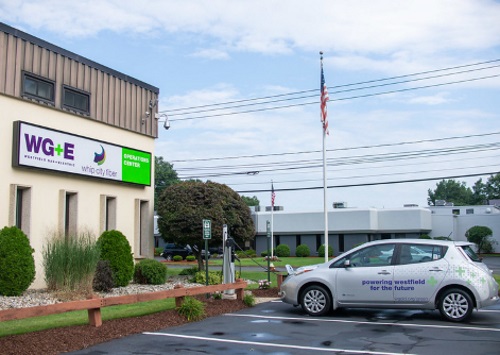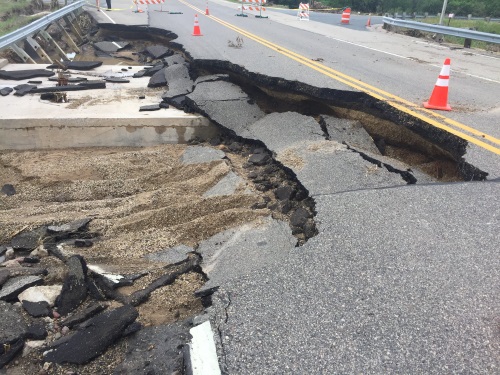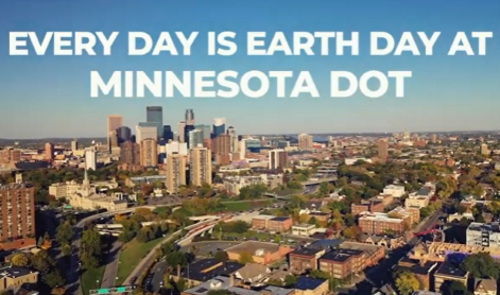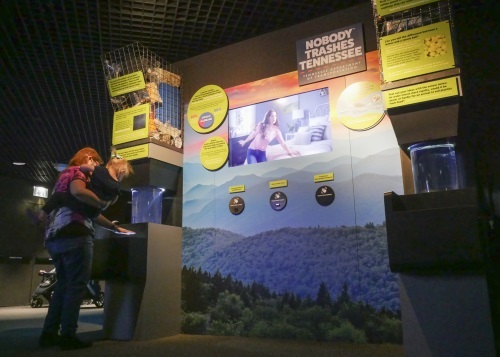FEDERAL ACTION
Republicans Reveal Five-Year $568B Infrastructure Proposal – AASHTO Journal
Factbox: Republicans vs. Biden: What’s in their infrastructure plans? – Reuters
Senators Offer Legislation to Help States Rebuild Infrastructure Following Extreme Weather – Southeast AgNet Radio Network
How an infrastructure bill can help rural communities in the West – Deseret News
COVID-19
MDHHS launches pilot Travel Points Testing at Michigan Welcome Centers and airports – Michigan Department of Health and Human and MDOT (Press release)
INFRASTRUCTURE RESILIENCE AND SUSTAINABILITY
Strict rules key to sustainable transportation, climate policy expert – FreightWaves
Q&A: Transportation secretary talks infrastructure, local projects – Eastern New Mexico News
Gov. Edwards, LA DOTD announces new infrastructure projects for the state – KARD-TV
Infrastructure bills advance in the Montana Senate – Independent Record
City begins pilot program to charge vehicles with solar power – City News Service
AIR QUALITY
United Airlines plans to use jet fuel made from trash – World Economic Forum
LIRR to test battery-operated trains to travel on diesel branches – WABC-TV
Cherokee Nation unveils first electric buses – Siloam Springs Herald-Leader
FACT SHEET: Biden Administration Advances Electric Vehicle Charging Infrastructure – White House (Press release)
Amtrak Adds Carbon Emission Savings Information on All Northeast Corridor Tickets – Amtrak (Press release)
ENVIRONMENTAL JUSTICE
10 Questions With The Father Of Environmental Justice – Science Friday
Earth Day: a time for environmental justice – Post Independent (Opinion)
Trucking’s relationship with environmental justice – FleetOwner (Commentary)
NATURAL RESOURCES
Forest growth can be stunted by noise pollution, study shows – The Weather Network
Tennessee Aquarium, TDOT’s Nobody Trashes Tennessee launch exhibits highlighting impact of road litter, microplastics on waterways – Tennessee Aquarium/TDOT (Press Release)
CULTURAL RESOURCES
Staff Seeks Input From Historic Preservation Commission on Colorado Street Bridge Suicide Barriers – Pasadena Now
Sacramento to transform historic train station into people-first mobility hub – SmartCitiesDive
Art in L.A.’s Union Station has been hidden for decades. Now it prepares for an Oscar debut – Los Angeles Times
The Delaware Bayshore Byway National Scenic Byway Designation Sign Unveiling – DelDOT (Press release)
HEALTH AND HUMAN ENVIRONMENT/ACTIVE TRANSPORTATION
Bikes are back for Birmingham – AL.com
80% of fatal e-scooter crashes involve cars – new study reveals where and why most collisions occur – The Conversation
Legislation to protect bicyclists passes in Oklahoma Senate – KFOR-TV
Quizzes help motorists, bicyclists learn how to share the road – Daily Herald
Bike shortage keeps Alaskan cyclists from hitting the road – Alaska Public Media
TRB RESOURCES/ANNOUNCEMENTS
TRB Webinar – How Ridehailing Companies Affect Airport Revenues and Operations – TRB (Webinar)
TRB Webinar: Increasing Return on Investment through Geotechnology – TRB
TRB Webinar: Senior Leadership’s Role in Embedding Transportation Resilience – TRB
Funding Transportation Beyond the COVID-19 Pandemic – TRB
Every Day is Earth Day at MnDOT – MnDot (Video)
FEDERAL REGISTER NOTICES
Comprehensive Plan and Special Regulations With Respect to High Volume Hydraulic Fracturing; Rules of Practice and Procedure Regarding Project Review Classifications and Fees – Delaware River Basin Commission (Final rule)
White House Environmental Justice Advisory Council; Notification of Virtual Public Meeting Series – EPA (Notice)
Air Plan Approval; Nebraska; Revisions to Title 129 of the Nebraska Administrative Code; Chapter 39 Visible Emissions From Diesel-Powered Motor Vehicles – EPA (Proposed rule)
Notice of Intent To Rule on Request for Change in Land Use From Aeronautical to Non Aeronautical for 16.2 Acres of Land at Pittsfield Municipal Airport, Pittsfield, MA – FAA (Request for public comments)
Rescinding a Notice of Intent To Prepare an Environmental Impact Statement for the Long Island Rail- Truck Intermodal Facility – FHWA (Notice to rescind a notice of intent to prepare an environmental impact statement)
Surface Transportation Project Delivery Program; California High- Speed Rail Authority Audit Report – FRA (Notice; request for comment)




